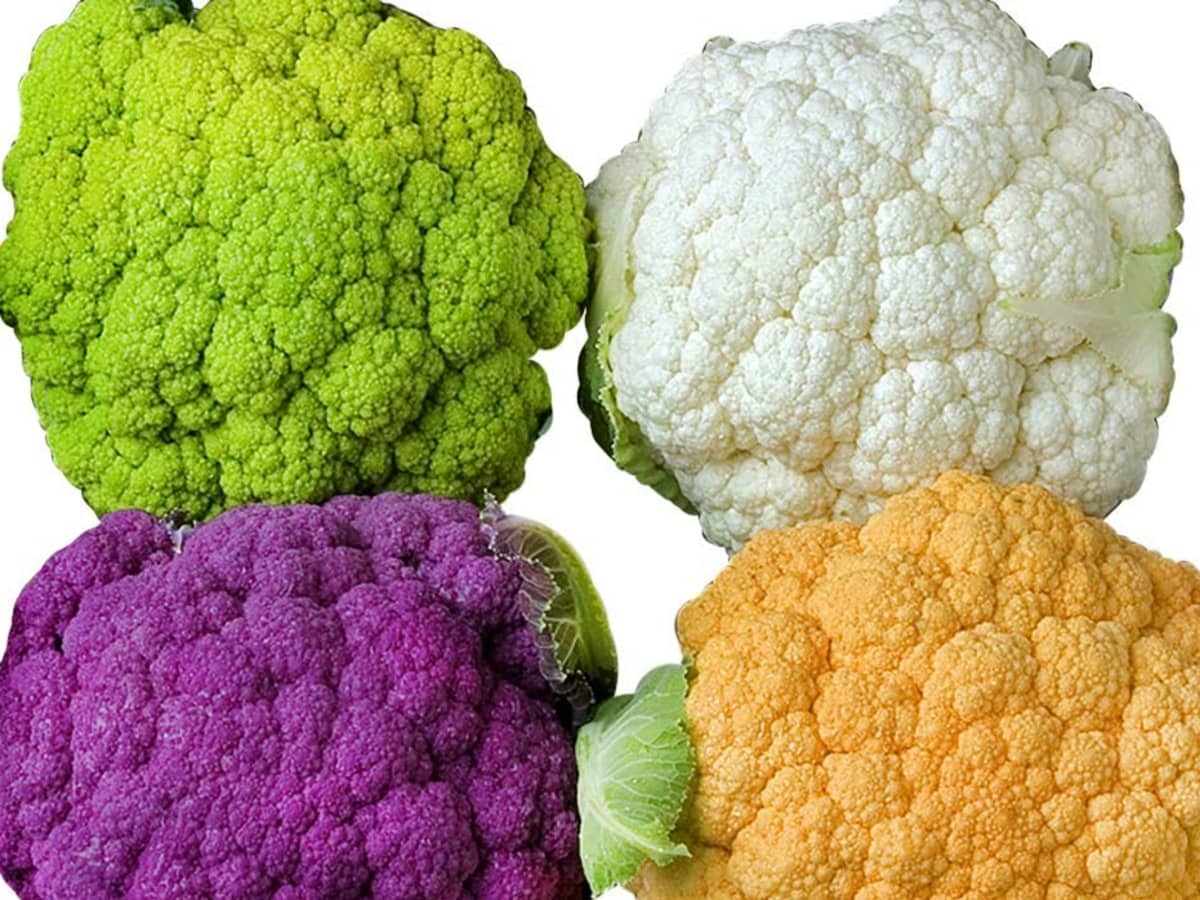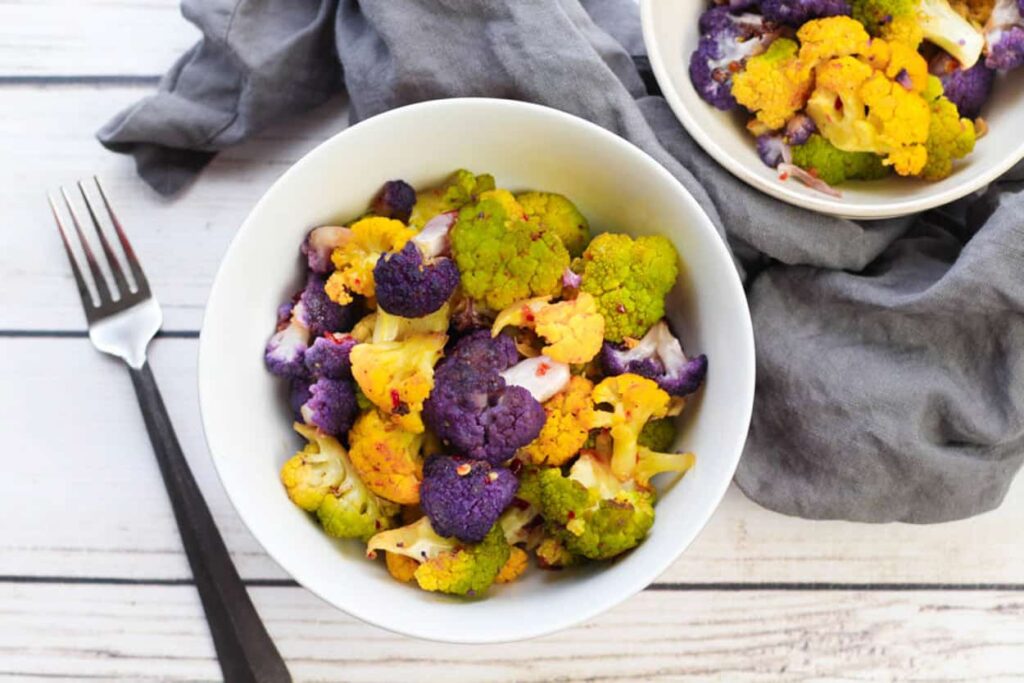
Tri-colored cauliflower, a captivating variation of the traditional white variety, has taken the culinary world by storm. With its striking hues of purple, orange, and green, tri-colored cauliflower not only adds a burst of color to your plate but also offers a plethora of health benefits. In this article, we’ll delve into the origins of tri-colored cauliflower, explore its nutritional profile, and discover creative ways to incorporate this colorful cruciferous vegetable into your diet.
Whether you’re a culinary enthusiast or a health-conscious individual looking to elevate your meals, tri-colored cauliflower is sure to captivate your senses and nourish your body. Join us on a journey into the vibrant world of tri-colored cauliflower, where taste meets nutrition in a symphony of colors and flavors.
The Health Benefits of Tri-Colored Cauliflower

Tri-colored cauliflower isn’t just a feast for the eyes; it’s also a nutritional powerhouse that offers a wide array of health benefits. Each color variation – purple, orange, and green – brings its own unique set of nutrients to the table, making tri-colored cauliflower a versatile and nutritious addition to any diet. Let’s explore the numerous health benefits of this vibrant cruciferous vegetable:
Rich in Antioxidants:
- Purple Cauliflower: Contains anthocyanins, potent antioxidants that may help reduce inflammation, improve cognitive function, and lower the risk of chronic diseases such as heart disease and cancer;
- Orange Cauliflower: Packed with beta-carotene, a precursor to vitamin A, which supports eye health, boosts immune function, and promotes healthy skin;
- Green Cauliflower: Rich in chlorophyll, a powerful antioxidant that may help detoxify the body, support liver health, and protect against oxidative stress.
Abundant in Vitamins:
- Vitamin C: Found in all three colors, vitamin C boosts immune function, promotes collagen synthesis for healthy skin, and acts as an antioxidant, protecting cells from damage;
- Vitamin K: Essential for blood clotting and bone health, vitamin K is abundant in green cauliflower;
- Various B Vitamins: Tri-colored cauliflower provides a range of B vitamins, including folate, B6, and riboflavin, which play crucial roles in energy metabolism, nerve function, and red blood cell production.
Anti-Inflammatory Properties:
- The phytonutrients present in tri-colored cauliflower, such as sulforaphane and indole-3-carbinol, have anti-inflammatory properties that may help reduce the risk of inflammatory conditions like arthritis and cardiovascular disease. Tri-colored cauliflower is a nutrient-dense, low-calorie food that can be enjoyed as part of a balanced diet, making it an excellent choice for weight management and overall health.
Incorporating tri-colored cauliflower into your meals not only adds visual appeal but also boosts the nutritional value of your dishes. Whether roasted, steamed, or raw, tri-colored cauliflower offers a delicious and nutritious way to support your health and well-being. So, next time you’re at the grocery store, why not pick up a head of tri-colored cauliflower and embark on a colorful culinary adventure? Your taste buds and your body will thank you for it.
Ways to Incorporate Tri-Colored Cauliflower into Your Diet

Tri-colored cauliflower isn’t just a visually stunning addition to your plate; it’s also incredibly versatile, allowing you to get creative in the kitchen while reaping its numerous health benefits. Whether you’re looking for a nutritious side dish or a main course centerpiece, tri-colored cauliflower can elevate your meals in both flavor and presentation. Here are several delicious ways to incorporate tri-colored cauliflower into your diet:
- Roasted Tri-Colored Cauliflower: Toss florets of purple, orange, and green cauliflower in olive oil, sprinkle with your favorite herbs and spices (such as garlic powder, paprika, and thyme), and roast in the oven until golden brown and caramelized. The roasting process enhances the natural sweetness of the cauliflower, resulting in a flavorful and crispy side dish;
- Tri-Colored Cauliflower Mash.Steam equal parts of purple, orange, and green cauliflower until tender, then mash with a potato masher or blend in a food processor until smooth. Add garlic, butter, Greek yogurt, or Parmesan cheese for extra flavor, and season with salt and pepper to taste. This colorful cauliflower mash is a nutritious and low-carb alternative to traditional mashed potatoes;
- Cauliflower Rice Medley. Pulse purple, orange, and green cauliflower florets separately in a food processor until they resemble rice grains. Mix the three colors together for a vibrant cauliflower rice medley that’s packed with nutrients. Use it as a base for stir-fries, fried rice, grain-free salads, or as a filling for stuffed vegetables;
- Tri-Colored Cauliflower Pizza Crust. Create a gluten-free and nutrient-rich pizza crust by blending steamed and riced purple, orange, and green cauliflower with almond flour, eggs, and seasonings. Press the mixture into a thin crust on a baking sheet, bake until golden brown and crispy, then top with your favorite pizza toppings for a colorful and guilt-free meal;
- Colorful Cauliflower Soup. Combine steamed purple, orange, and green cauliflower with onions, garlic, vegetable broth, and your choice of herbs and spices in a blender. Blend until smooth, then heat the mixture on the stove until warmed through. Garnish with a drizzle of olive oil, a sprinkle of fresh herbs, or a dollop of Greek yogurt for a comforting and visually stunning soup;
- Tri-Colored Cauliflower Salad. Mix blanched purple, orange, and green cauliflower florets with chopped vegetables (such as bell peppers, cherry tomatoes, and cucumbers), cooked grains (such as quinoa or farro), fresh herbs, and a tangy vinaigrette dressing. Toss everything together for a colorful and nutritious salad that’s perfect for lunch or as a side dish;
- Cauliflower Steak Trio. Slice purple, orange, and green cauliflower heads into thick “steaks,” brush with olive oil, and season with your favorite spices (such as smoked paprika, cumin, and chili powder). Grill or roast the cauliflower steaks until tender and caramelized, then serve with a squeeze of lemon juice and a sprinkle of fresh herbs for a visually stunning and satisfying main course.
With these creative and delicious ways to incorporate tri-colored cauliflower into your diet, you’ll never see this humble vegetable the same way again. Whether you’re a seasoned chef or a novice cook, tri-colored cauliflower offers endless possibilities for nutritious and flavorful meals that will delight your taste buds and nourish your body.
Tips for Selecting and Storing Tri-Colored Cauliflower
Tri-colored cauliflower, with its vibrant hues of purple, orange, and green, adds a colorful and nutritious twist to your meals. To ensure that you’re selecting the freshest and highest-quality cauliflower and preserving its flavor and texture, here are some tips for selecting and storing tri-colored cauliflower:
Selecting Tri-Colored Cauliflower:
- Look for Firm Heads: Choose cauliflower heads that are firm, compact, and heavy for their size. Avoid heads with soft spots, blemishes, or signs of discoloration, as these may indicate spoilage;
- Check the Leaves: Examine the leaves surrounding the cauliflower head. They should be crisp, fresh-looking, and tightly wrapped around the head, indicating freshness;
- Inspect the Color: While the colors of tri-colored cauliflower may vary, each head should have vibrant and uniform coloring. Look for cauliflower with rich, deep hues without any signs of fading or dullness;
- Avoid Moisture: Steer clear of cauliflower heads with excessive moisture or signs of mold, as this can lead to spoilage and affect the quality of the vegetable.
Storing Tri-Colored Cauliflower:
- Refrigerate Immediately: After purchasing tri-colored cauliflower, refrigerate it promptly to maintain its freshness. Place the cauliflower in a perforated plastic bag or loosely wrap it in a damp paper towel to prevent moisture loss while allowing for air circulation;
- Store in the Crisper Drawer: Store tri-colored cauliflower in the crisper drawer of your refrigerator, where the temperature is slightly cooler and more consistent. Avoid placing it near ethylene-producing fruits, such as apples and bananas, as this can accelerate ripening and spoilage;
- Use within a Week: Tri-colored cauliflower is best consumed within one week of purchase for optimal flavor and texture. While it can last longer under proper storage conditions, its quality may decline over time;
- Avoid Washing Before Storage: Refrain from washing tri-colored cauliflower before storing it, as excess moisture can lead to rotting. Instead, wait until you’re ready to use the cauliflower before rinsing it under cold water to remove any dirt or debris;
- Trim as Needed: If you notice any blemishes or damaged areas on the cauliflower head, trim them off before storing to prevent further decay. Use a sharp knife to cut away any discolored or wilted portions, ensuring that only the freshest parts remain.
By following these tips for selecting and storing tri-colored cauliflower, you can enjoy this colorful and nutritious vegetable at its peak freshness. Whether roasted, steamed, or incorporated into your favorite recipes, tri-colored cauliflower adds a delightful pop of color and flavor to your culinary creations. So, the next time you’re at the market, pick up a head of tri-colored cauliflower and embark on a culinary adventure that’s as visually stunning as it is delicious.
In Conclusion
Tri-colored cauliflower is not only a feast for the eyes but also a nutritional powerhouse. By incorporating this colorful cruciferous vegetable into your diet, you can enjoy a wide range of health benefits while adding excitement to your meals. So, why not embrace the rainbow and make tri-colored cauliflower a staple in your kitchen? Your taste buds and your body will thank you for it.